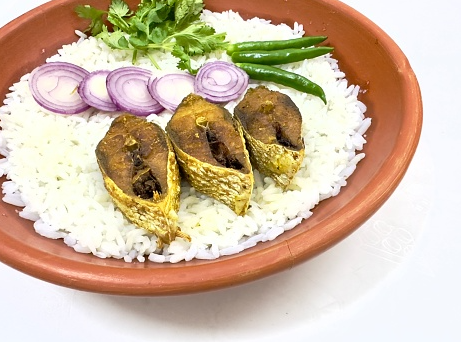Let's talk about Bangladesh National Dish. Hilsa, also known as the "King of Fish," is a popular and prized fish in Bangladesh, known for its delicious taste and cultural significance. Hilsa is the national fish of Bangladesh and is considered the country's national dish. In this article, we will explore the history, preparation, health benefits, economic significance, festivals, conservation efforts, and sustainability measures related to Hilsa.
History of Bangladesh National Dish
Hilsa is a migratory fish that is found in the Bay of Bengal and the Arabian Sea. The origins of Hilsa can be traced back to the ancient Indus Valley Civilization, where it was considered a delicacy. The cultural significance of Hilsa can be seen in ancient Sanskrit texts, where it is mentioned as one of the five most important fish. In Bangladesh, Hilsa has a long history, with references to the fish in Bengali literature and songs.
Preparation of Bangladesh National Dish
Hilsa is usually prepared by marinating it with turmeric and salt and then frying it in mustard oil. It can also be cooked with various spices, such as cumin, coriander, and chili powder. The cooking techniques for Hilsa vary from region to region and even from household to household. Some people prefer to steam or grill the fish, while others like to cook it in a clay oven.
Health Benefits of Hilsa
Hilsa is a rich source of protein, omega-3 fatty acids, vitamins, and minerals. It is known to have numerous health benefits, such as reducing the risk of heart disease, improving brain function, and boosting immunity. The fish also has medicinal properties and is used in traditional medicine to treat various ailments.
Hilsa in the Economy
Hilsa is an important fish in the Bangladesh economy. It is a major source of livelihood for fishermen, and the local industry provides employment for thousands of people. Hilsa is also an important export, with countries such as India, Pakistan, and the United States importing the fish.
Bangladesh National Dish; Festivals
Hilsa is celebrated in various festivals in Bangladesh and neighboring countries. Pohela Boishakh, the Bengali New Year, is a major festival where Hilsa is a central dish. The Padma Meghna Jamuna Utsab is another popular festival where Hilsa is celebrated. In Kolkata, the Hilsa Festival is a major event where chefs from Bangladesh and India showcase their culinary skills.
Hilsa Conservation
Hilsa is facing numerous threats, including overfishing, pollution, and habitat destruction. To address these issues, the government of Bangladesh has implemented various conservation efforts, such as enforcing fishing regulations and promoting sustainable fishing practices. There are also several sustainability measures in place to ensure the long-term survival of the fish, such as the promotion of fish sanctuaries and the use of fish ladders to allow the fish to swim upstream during their breeding season.
Conclusion
Hilsa is not just a delicious fish, but it is also an important cultural and economic resource for Bangladesh. It has a rich history, and its preparation and consumption are deeply rooted in Bangladeshi culture. However, the fish is facing numerous threats, and conservation efforts are needed to ensure its sustainability for future generations.
FAQs
- Why is Hilsa considered the national fish of Bangladesh?
Hilsa is considered the national fish of Bangladesh due to its cultural and historical significance in the country.
- What are the health benefits of Hilsa?
Hilsa is a rich source of protein, omega-3 fatty acids, vitamins, and minerals. It is known to have numerous health benefits, such as reducing the risk of heart disease, improving brain function, and boosting immunity.
- What are the different ways to cook Hilsa?
Hilsa can be cooked in various ways, such as marinating it with turmeric and salt and frying it in mustard oil, or cooking it with various spices such as cumin, coriander, and chili powder.
- What are the threats to the Hilsa population?
Hilsa is facing numerous threats, including overfishing, pollution, and habitat destruction.
- What conservation efforts are being made to protect Hilsa?
The government of Bangladesh has implemented various conservation efforts, such as enforcing fishing regulations and promoting sustainable fishing practices. There are also several sustainability measures in place to ensure the long-term survival of the fish.
References
- Ahmed, M., Hasan, M. R., & Islam, M. M. (2016). Nutritional Value of Hilsa (Tenualosa ilisha) Fish and Health Benefits. In Marine Nutraceuticals and Functional Foods (pp. 227-242). CRC Press.
- Department of Fisheries, Bangladesh. (2019). National Fish Week Compendium.
- Islam, M. S., Islam, M. S., & Alam, M. S. (2019). Determination of Water Quality Parameters of Halda River for Sustainable Hilsa Fisheries Management in Bangladesh. Asian Journal of Advances in Agricultural Research, 9(3), 1-12.
